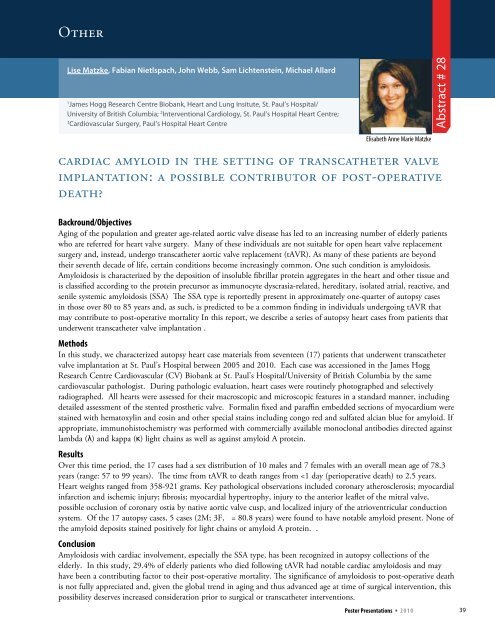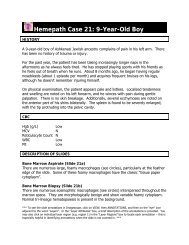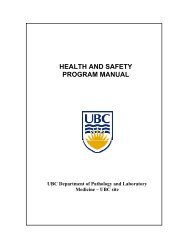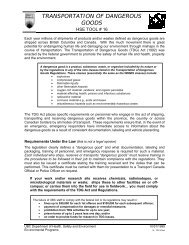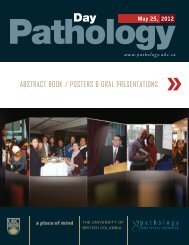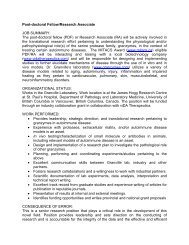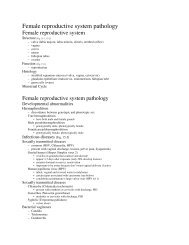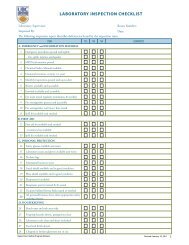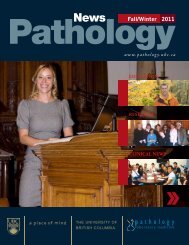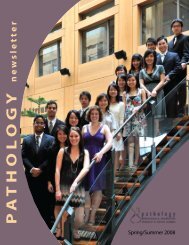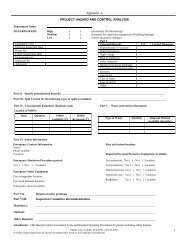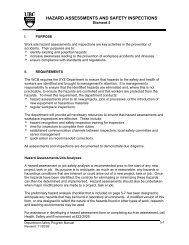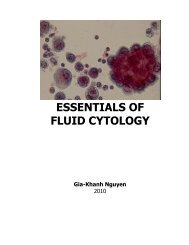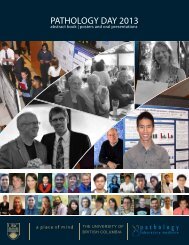Oral Presentations - Pathology and Laboratory Medicine - University ...
Oral Presentations - Pathology and Laboratory Medicine - University ...
Oral Presentations - Pathology and Laboratory Medicine - University ...
You also want an ePaper? Increase the reach of your titles
YUMPU automatically turns print PDFs into web optimized ePapers that Google loves.
OtherLise Matzke, Fabian Nietlspach, John Webb, Sam Lichtenstein, Michael Allard1James Hogg Research Centre Biobank, Heart <strong>and</strong> Lung Insitute, St. Paul’s Hospital/<strong>University</strong> of British Columbia; 2 Interventional Cardiology, St. Paul’s Hospital Heart Centre;3Cardiovascular Surgery, Paul’s Hospital Heart CentreAbstract # 28Elisabeth Anne Marie Matzkecardiac amyloid in the setting of transcatheter valveimplantation: a possible contributor of post-operativedeath?Backround/ObjectivesAging of the population <strong>and</strong> greater age-related aortic valve disease has led to an increasing number of elderly patientswho are referred for heart valve surgery. Many of these individuals are not suitable for open heart valve replacementsurgery <strong>and</strong>, instead, undergo transcatheter aortic valve replacement (tAVR). As many of these patients are beyondtheir seventh decade of life, certain conditions become increasingly common. One such condition is amyloidosis.Amyloidosis is characterized by the deposition of insoluble fibrillar protein aggregates in the heart <strong>and</strong> other tissue <strong>and</strong>is classified according to the protein precursor as immunocyte dyscrasia-related, hereditary, isolated atrial, reactive, <strong>and</strong>senile systemic amyloidosis (SSA) The SSA type is reportedly present in approximately one-quarter of autopsy casesin those over 80 to 85 years <strong>and</strong>, as such, is predicted to be a common finding in individuals undergoing tAVR thatmay contribute to post-operative mortality In this report, we describe a series of autopsy heart cases from patients thatunderwent transcatheter valve implantation .MethodsIn this study, we characterized autopsy heart case materials from seventeen (17) patients that underwent transcathetervalve implantation at St. Paul’s Hospital between 2005 <strong>and</strong> 2010. Each case was accessioned in the James HoggResearch Centre Cardiovascular (CV) Biobank at St. Paul’s Hospital/<strong>University</strong> of British Columbia by the samecardiovascular pathologist. During pathologic evaluation, heart cases were routinely photographed <strong>and</strong> selectivelyradiographed. All hearts were assessed for their macroscopic <strong>and</strong> microscopic features in a st<strong>and</strong>ard manner, includingdetailed assessment of the stented prosthetic valve. Formalin fixed <strong>and</strong> paraffin embedded sections of myocardium werestained with hematoxylin <strong>and</strong> eosin <strong>and</strong> other special stains including congo red <strong>and</strong> sulfated alcian blue for amyloid. Ifappropriate, immunohistochemistry was performed with commercially available monoclonal antibodies directed againstlambda (λ) <strong>and</strong> kappa (κ) light chains as well as against amyloid A protein.ResultsOver this time period, the 17 cases had a sex distribution of 10 males <strong>and</strong> 7 females with an overall mean age of 78.3years (range: 57 to 99 years). The time from tAVR to death ranges from


